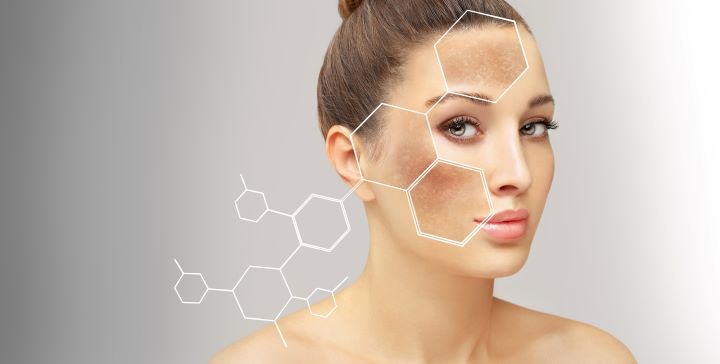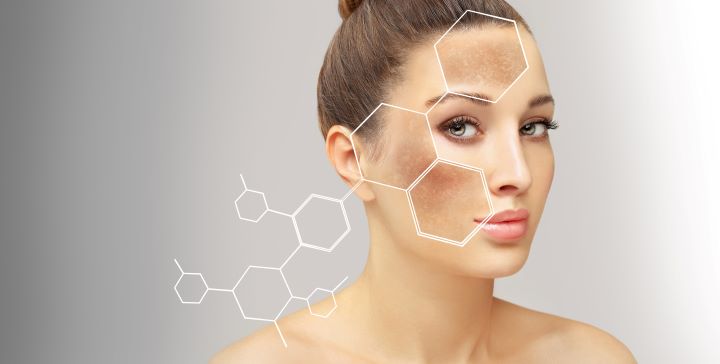Pigmentation
Hyperpigmentation is the darkening of the skin, typically caused by an excessive amount of melanin, the pigment responsible for skin color. This condition can occur anywhere on the body but is most commonly seen on the face. While it is harmless, hyperpigmentation can affect all skin types. Those with greater sun exposure are more likely to develop pigment spots. Various types of pigment spots can arise due to abnormal activity of melanin-producing cells.

Types of Hyperpigmentation
1. Sun Spots: Also known as age spots, sun spots are triggered by overexposure to sunlight. They commonly appear on areas of the body that are frequently exposed to the sun, such as the face, neck, hands, and forearms. These spots are small, flat patches ranging from light brown to black. Typically, they appear in people over 50, but younger individuals who spend a lot of time in the sun can also develop them.
2. Freckles: Freckles are clusters of concentrated melanocytes, most noticeable in people with fair skin. They are harmless and become more pronounced when exposed to UV rays. Freckles usually appear at a younger age compared to age spots. There are two types:
– Ephelides: Slightly tan spots more common in red-headed individuals.
– Lentigines: Isolated dark spots that occur at sites of sun damage.
3. Melasma: Melasma is a type of hyperpigmentation where pigmentation occurs in the deep dermis, deeper than typical sun damage pigmentation. It mostly affects pregnant women or those experiencing hormonal changes, such as starting or stopping contraceptive pills. Often referred to as the “mask of pregnancy,” melasma typically appears on the face. Treating melasma is generally more challenging than other forms of pigmentation, and sunlight exposure can exacerbate its appearance.
4. Post-inflammatory Hyperpigmentation (PIH): PIH occurs following skin injuries, such as burns. It is more common in individuals with darker skin tones (Fitzpatrick skin types 3, 4, 5, and 6). It’s possible to have multiple types of pigmentation simultaneously.





